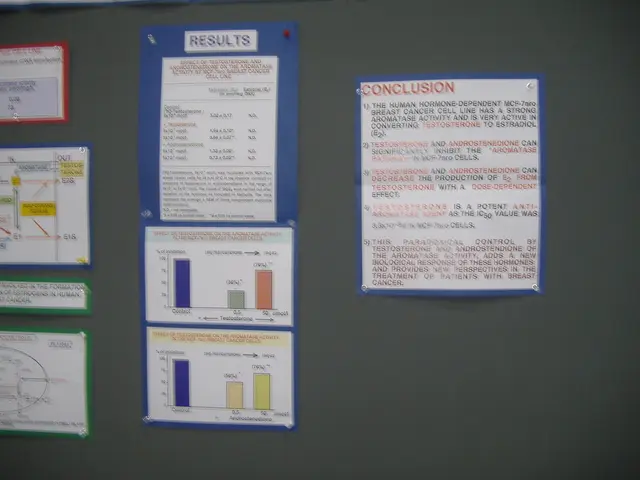Utilizing Pre-made Concept Map Templates to Streamline Complicated Concepts
In the bustling world of business, clarity and efficiency are key to success. One tool that's gaining traction for its ability to deliver both is the concept map.
Concept maps are visual tools used by businesses to illustrate the different systems within an organization. They offer a clear, visual way to organize, plan, and communicate complex information, workflows, and relationships within a company. Compared to traditional linear or text-based methods, concept maps provide several distinct advantages.
Visual Clarity and Structure
Concept maps arrange information spatially, showing hierarchical connections between main ideas and subtopics. This spatial organisation makes complex data easier to understand and remember at a glance.
Improved Organization
By breaking down complicated processes or data into manageable visual sections, concept maps facilitate quicker comprehension and analysis. Whether it's the company structure, workflows, product development, or supply chains, concept maps provide a bird's-eye view of the intricate web of interconnections.
Enhanced Communication
Concept maps reduce confusion and improve coordination among team members and managers by illustrating relationships like reporting lines, decision-making roles, or task dependencies.
Better Planning and Decision-Making
Businesses can use concept maps to design meeting agendas, plan projects, identify inefficiencies, and visualize strategic connections. This leads to more informed decisions and efficient operations.
Efficient Review and Collaboration
Concept maps serve as quick-reference tools for reviewing key points before meetings or presentations, and their visual nature supports real-time collaboration and idea capture during discussions.
Active Engagement and Retention
Creating and interacting with concept maps fosters deeper understanding and critical thinking, supporting better retention than traditional note-taking or textual outlines.
Beyond business operations, concept maps can be repurposed to outline the process of creating a presentation. They ensure that slides and information have a logical flow while still being concise. They can also visualize outcomes, making it easier for people to understand the direct and indirect outcomes of a certain action.
Concept maps can be adapted into medical or nursing concept map templates to make the topics of discussion more interesting for students. There are various customizable concept map templates available, such as the blue biology, iconic chemistry, chemistry, plant biology, and red protein concept map templates.
The steps to making a concept map include: selecting a drawing tool, determining the main focus, deducing key ideas, incorporating lines and shapes, and proofreading the concept map. A concept map template can make a brainstorming session more productive.
In the digital age, platforms offer a variety of elegant fonts, ranging from classic to modern ones, that can be incorporated into concept map templates. These platforms also host 3 million+ stunning images and 40,000 icons to customize concept map templates.
Concept maps are different from mind maps as they discuss the connections between multiple concepts, while mind maps focus on a single main point. Creating concept map templates can make the process easier to replicate for businesses that have little time.
Concept maps are considered beneficial to both the presenter of the idea and the people receiving the new information. A concept map typically reads from the top down, from the most general information to the smaller details, demonstrating hierarchy.
In conclusion, concept maps present complex information in a simpler form, making them effective visual aids for various uses and purposes, including presentations. They offer a dynamic and interactive alternative to traditional methods by providing a visual, holistic, and flexible approach to managing business information and processes, improving clarity, engagement, and efficiency across various business functions.
Team collaboration can benefit from the use of concept maps, as they provide a visual, holistic, and flexible approach to managing complex information, workflows, and relationships within a company, improving communication and reducing confusion among team members and managers.
Data visualization tools like concept maps are not only useful in business operations for planning and decision-making purposes but also expand their utility in areas like education-and-self-development, where repurposed concept maps can make topics more interesting and support better retention among students.




